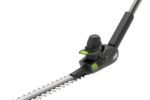The History And Evolution Of Saws
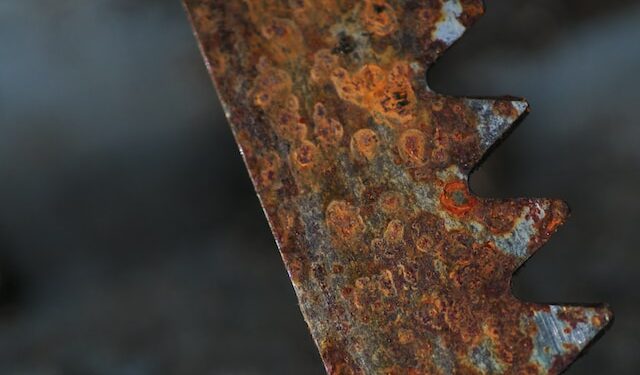
Wow! Saws! Who knew they had such an incredible history? Well, friends, I’m here to school you on the the history and evolution of saws, because let me tell you, it’s quite fascinating!
Let’s go all the way back to the beginning and talk about the ancient history of saws. Although people have been around for thousands of years, it wasn’t until about 5,000 years ago that the first saws appeared. For example, around 2900 BC in Egypt, people were using copper blades for sawing. Throughout the ages, many different cultures have developed similar sawing tools. For example, in India and Japan during the 1600s, people used a type of saw known as a frame saw made from wood and steel.
Moving into the pre-industrial revolution, the Renaissance saw a massive revolution in saw making that eventually lead to the development of more modern tools. Initially, machines were used to fashion blades with greater precision. Later, tension mechanisms were developed that allowed the blade to be more rigid and thus more effective. This finally lead to the creation of wrought iron frames, revolutionizing saw production in Europe.
As the industrial revolution began to pick up steam, the manufacture of mechanical saws was in full swing. Come 1850, crosscut saws were produced that allowed for two-man operation and were more efficient than their hand saw predecessors. Likewise, around this time the sawmill became a thing, and large scale milling for mass production really began to take off.
Then there’s the unsung hero of sawing – the power saw. Since its invention in the late 1800s, the humble power saw has been an incredibly dependable tool for any DIY enthusiast or professional contractor. Jigsaws, circular saws, reciprocating saws – these are just a few of the many amazing examples of power saws on the market today.
But you know what I haven’t mentioned yet? Strange uses for saws! Now comes the fun part. From carvings and musical instruments to cooking utensils and sculptures, saws can be used to fashion all sorts of curious creations. Honestly, the imagination is the only limit!
In summary, saws have come a long way since their humble beginnings. From copper blades to the amazing power saws of today, saws have been an incredibly versatile and dependable tool throughout history. So, the next time you’re sawing something, just remember the impressive evolution of saws that has gotten us to this point.
Ancient History

In Ancient History, humankind learned to appreciate the power of the saw. Before we had electric saws and power tools, saws were made of wood, stone, and even bone!
The earliest known manufacturers of saws were the ancient Egyptians who made them from copper strips. During the seventh century BC, the Assyrians were credited with making saws from iron and bronze.
Archaeologists have even uncovered evidence that humans used saws as far back as 30,000 years ago! These Stone Age saws were primarily made from flint, bone, and animal teeth.
Saws have come a long way since then. As many of us know, saws are still an essential tool in every handyman’s toolkit. Let’s take a moment to reflect on how far we have come since the first saw was thought to have been invented all those years ago.
What’s even more interesting is the various uses for saws throughout the ages. As you can imagine, saws have had a wide range of applications throughout the centuries. From carpentry to bone setting, saws have helped shape our world in more ways than one.
In Ancient Greece, saws were used to carve intricate marble sculptures. Ancient Romans used saws for more mundane tasks such as cutting wood and stone blocks for construction purposes. In Ancient Chinese culture, saws were used to cut gold, silver, jade, and other precious stones.
And lastly, there was also the bow saw – a short version of the handsaw that was used for small cuts and easier access in tight places.
Saws certainly have come a long way since their inception centuries ago. So the next time you pick up a power saw, take a moment to appreciate how far we have come in terms of innovation and practicality. Power saws have certainly made life a lot easier, haven’t they?
Pre-Industrial Revolution
If you thought saws couldn’t get any cooler, hold on to your seat! Let’s journey back in time to pre-Industrial Revolution and check out the world of the saw.
Back in those days, there were no electric saws. Instead, people made saws with whatever materials were around – usually wooden pieces, metal blades, and twine. The saws were incredibly primitive, but they got the job done.
It was a pretty laborious process getting these saws ready for use. First, one had to scrape a metal blade into the surfaces where it was intended for use. Once the blade was in place, one had to use tools to create a custom-fit between the blade and the saw handle. Then, the user had to manually twist the handle to make the blade move.
The results of this laborious process were impressive, though. Those early saws could cut through all sorts of materials, from trees to other types of wood. In short, these early saws had some serious sawing power!
Of course, there were some drawbacks. For starters, all sawing had to be done by hand, which was a time-consuming process. Additionally, saw blades often weren’t as sharp as they needed to be, and they weren’t always easy to replace.
Furthermore, to make a saw truly useful, one had to invest in a number of other tools, such as a handsaw, a saw blade sharpener, and a saw filing tool. With the right tools, though, those early saws made a huge difference for those living in rural communities.
Though challenging, people were able to make a wide variety of items with the help of saws. From furniture to tools, saws enabled people to craft useful items that were previously impossible to make. Not bad for a primitive tool, eh?
So, from scraping blades into wood to fashioning furniture, saws have come a long way throughout history. The pre-Industrial Revolution saws weren’t nearly as advanced as the ones we have today, but they still got the job done with a little creativity and elbow grease.
If you ever wanted an appreciation for the saws of today, this should do the trick! Just think: our ancestors had to go through all that trouble to get a saw just right, while you can just press a button and let the saw do the work for you. Ah, the marvels of technology!
Rise of Mechanical Saws
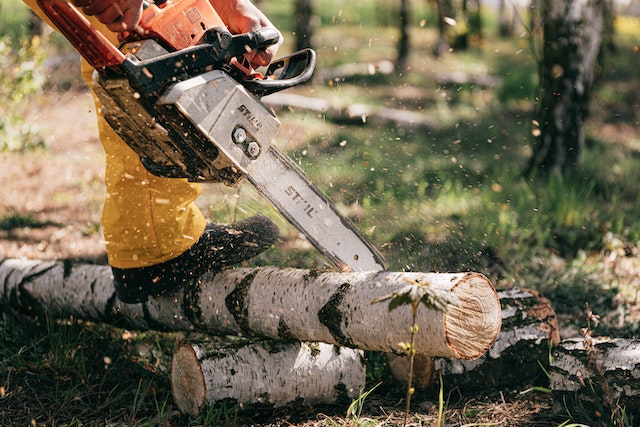
Throughout history, Saws have come a long way. From ancient days of free-hand, to the more refined invention of the mechanical saw, we have certainly done a lot to make the life of an everyday saw-er more efficient!
Let’s take a look at the rise of mechanical saws. The mechanical saw, as we know them today, began as a simple combination of a whetstone and a normal two-person saw. It was first introduced in the early 18th century and shortly after, they began to be mass-produced in England and the United States.
What made the mechanical saw different from the two-person saw was that the saw had a series of angled teeth that allowed it to make more precise cuts. Not only did it make the job of sawing a lot easier, it allowed for quick and accurate cuts that could not be achieved by a two-person saw.
One of the first mechanical saws was the crank-arm saw which had a crank-like handle that you would turn in order to drive the blade of the saw. This allowed the saw to move faster and with more precision than a normal two-person saw. As technology progressed, the crank-arm saw was replaced with the belt-driven saw.
These belt-driven saws were powered by a belt and pulley system, which allowed the saw to make more accurate and precise cuts. Soon, sawmakers began to introduce other changes such as extending the belt and adding wax coatings to the blade in order to reduce friction.
This marked a major turning point for the saw, as it began to take shape as the modern day saw that we know and love today. In addition to improved accuracy, mechanical saws also had other advantages such as speed and consistency. As technology progressed, so did the uses of saws.
For example, mechanical saws were used to cut lumber more accurately and quickly, making them ideal for use in the construction industry. They were also used to make precision cuts in stone and metal, thus heralding a new era of construction and engineering.
Mechanical saws have come a long way since their invention in the eighteenth century. They have been used in construction, engineering and a variety of other applications. Today, they are the common saw that many of us use and love, and their history is still being written. Who knows what they will be able to do in the future? I can’t wait to find out!
Modern Power Saws
Ah, modern power saws! What a wonderful technology! Where would we be without them these days? I mean, come on… can you imagine having to hand-cut lumber with an axe or a primitive saw? No thank you!
Let’s take a look at what modern power saws are all about. What is it that makes them so great? Well, most modern power saws are powered by some sort of motor, usually an electric motor or a gasoline engine. This motor powers the cutting blade which is usually either a circular saw blade, a reciprocating saw blade, or a jigsaw blade. The motor also powers some type of dust collection system so that debris is removed from the working area while cutting.
The great thing about modern power saws is they are highly versitile and can be used to cut wood, metal, tile and even glass depending on what kind of blade you use. Reciprocating saws, for example, are great for cutting through thick branches or metal pipes. A jigsaw can be used for detailed or curved cuts in wood or metal, or for cut-outs in a tile or glass.
Modern power saws are also great for precise cuts, which makes them perfect for do-it-yourself projects like furniture building or other types of carpentry or fabricating. A miter saw or a table saw for example, can make precise angles and bevels with ease.
And finally, modern power saws are relatively safe to use compared to their primitive counterparts. Most have some sort of guard or slip device that prevents accidental cuts. Some even have built-in kickback prevention, which reduces the risk of a spinning saw blade grabbing material and throwing it back at the operator.
So as you can see, modern power saws have come a long way and have become an indispensable tool in today’s world. There’s a good reason why they are an essential part of any handyman’s toolbox. Who knows what the future holds… maybe one day we will have saws that can cut through anything and make all our lives easier. But until then, we can be thankful for modern power saws!
Strange Uses for Saws
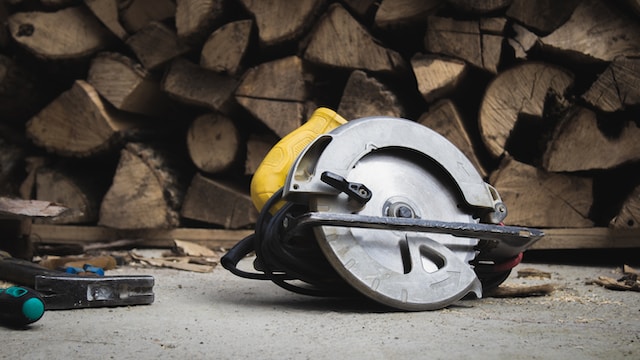
Okay, it’s time to talk about some strange uses for saws. I’m gonna guess that when you hear the word ‘saw’, you don’t immediately think of crazy uses, right? Wrong my friend.
As early as 600 BC, saws were being used in Ancient Greece to surgically remove tumors. That’s right, saws were actually being used like a scalpel. Talk about being a pioneer!
Fast forward to the 16th century and saws were apparently being used to cut up those pesky street musicians in Spain. It’s said that in an attempt to end the plague of fiddle-players, the Spanish would use saws to cut their instruments and even the musicians themselves. Not exactly sure how that was supposed to work or if it was even a real thing, but it just shows the extremes people go to when they’re fed up with loud noises.
During World War I, a variety of saws were used to break down machine gun rings as if they were panes of wood. This kind of saw was specially designed to deal with thick wire and chain-links. Talk about tough customers.
In perhaps the most unexpected use of saws, they have even been used to create art. How is that possible you may ask? Woodworking saws have been used to help carve out intricate models and sculptures made from wood.
Finally, saws have been modified to work in laboratories and medical fields. The Microtome saw is a special tool designed to make very thin cuts either in wood or in tissue. It’s also been used to make paper-thin slices of cheese!
Saws are sometimes used for more than their intended purpose, which can even lead to some strange and creative uses. From cutting tumors to slicing cheese, it looks like saws have come a long way since their Ancient Greek origins. Who knows what other strange uses we’ll see for them in the future!
Final Thoughts on Saws
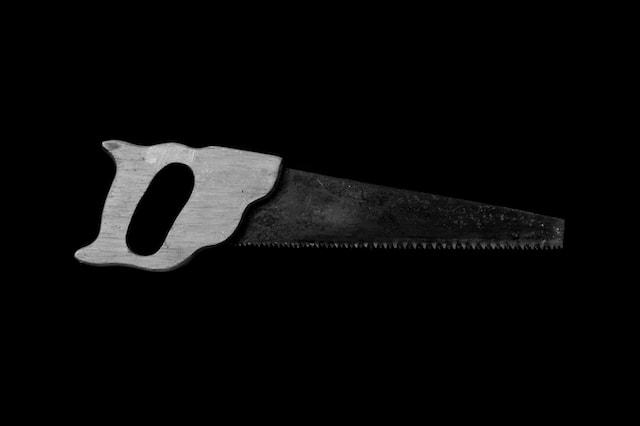
When it comes to final thoughts on saws, all I can say is… wow! From simple but effective tools of ancient civilizations to the advanced mechanical and power saws we have today, saws have come a long way.
It is amazing to think that in just a few thousand years we have gone from crude hand-held primitive tools to complex mechanized cutting solutions. I wonder what we will come up with next, just like the old saying goes, “necessity is the mother of invention”; who knows what life-changing and innovative saws we will see in the future?
One thing is for sure, saws will continue to be an invaluable tool in the hands of craftspeople, builders, and DIYers. We should never take for granted the power of a good saw; they can be used to limb a tree, shape wood and metal, create furniture, and even open a can of worms! They are an integral part of a complete toolbox and can mean the difference between having a project done quickly and efficiently, or taking twice as long than it should have in the first place.
Saws have certainly earned their place in history as some of man’s most important tools. We can thank the engineers and inventors of the past for helping to create some of the most advancement saws seen to date. But at the same time we should also remember that some of the earliest simple saw designs were effective and still used today despite all of the technological advances.
In the end, it’s the saw user who will decide which tool is the “right” saw for the job. Whether the task is small or large, the saw in the user’s hand is the one that is ultimately going to make the most difference in the end result. And no matter what type of saw is used, remember to stay safe and handle with care.
Now that we’ve made it through this lengthy discussion of saws, let’s grab a saw of our own and continue our projects! ‘Cause who wants to wait any longer? Not me!

